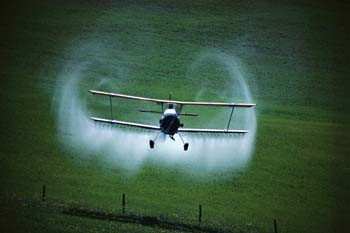Thu, May 15, 2014
Calls For Stronger Collaboration Between Regulators And Industry
The NTSB has released findings from its Special Investigation Report on the Safety of Agricultural Aircraft Operations. As a result of the safety issues identified in the study, the NTSB issued eight safety recommendations to the FAA and the National Agricultural Aviation Research & Education Foundation urging the two organizations to work together to develop and distribute agricultural operations-specific guidance on fatigue management, risk management, aircraft maintenance, and pilot knowledge and skills tests.

Agricultural operations, a niche group within the general aviation community, are subject to many safety hazards because they fly low enough to have to be concerned about obstacles such as power lines, communications towers, and meteorological evaluation towers. While these operations have historically ranked sixth or seventh among general aviation sectors in terms of hours flown, they have ranked third in terms of the number of annual accidents. Based on a review of these data and the findings from several agricultural operation accident investigations, last year, the NTSB initiated a special investigation to better understand the issues affecting the industry. During the 2013 aerial application season, the NTSB investigated 78 accidents, which included gathering information in the areas of pilot work and sleep schedules, pilot training and experience, and aircraft maintenance.
“Ag operations are inherently flown at low altitudes, often close to obstacles and hazards. That kind of flying requires rigorous risk assessment and risk management to operate safely,” said NTSB Board Member Earl Weener.

Investigators found that collisions with obstacles are a prevailing concern in the industry. In addition to the special report and recommendations, the NTSB issued a new Safety Alert, “Preventing Obstacle Collision Accidents in Agricultural Aviation.” The alert encourages ag-operators to conduct thorough preflight and aerial surveys, use technology to identify and maintain awareness of obstacles, and have a better understanding of the performance limitations and requirements of their aircraft. A companion Video Safety Alert was created and released to help inform and educate pilots, operators, and maintenance personnel.
(Images from file)
More News
Takeoff Roll The process whereby an aircraft is aligned with the runway centerline and the aircraft is moving with the intent to take off. For helicopters, this pertains to the act>[...]
“We’re proud of the hard work that went into receiving this validation, and it will be a welcome relief to our customers in the European Union. We couldn’t be mor>[...]
"Aircraft Spruce is pleased to announce the acquisition of the parts distribution operations of Wag-Aero. Wag-Aero was founded in the 1960’s by Dick and Bobbie Wagner in the >[...]
IDENT Feature The special feature in the Air Traffic Control Radar Beacon System (ATCRBS) equipment. It is used to immediately distinguish one displayed beacon target from other be>[...]
Aero Linx: Pararescue Air Force Pararescuemen, also known as PJs, are the only DoD elite combat forces specifically organized, trained, equipped, and postured to conduct full spect>[...]
 ANN's Daily Aero-Term (05.10.24): Takeoff Roll
ANN's Daily Aero-Term (05.10.24): Takeoff Roll Aero-News: Quote of the Day (05.10.24)
Aero-News: Quote of the Day (05.10.24) Aero-News: Quote of the Day (05.11.24)
Aero-News: Quote of the Day (05.11.24) ANN's Daily Aero-Term (05.11.24): IDENT Feature
ANN's Daily Aero-Term (05.11.24): IDENT Feature ANN's Daily Aero-Linx (05.11.24)
ANN's Daily Aero-Linx (05.11.24)




